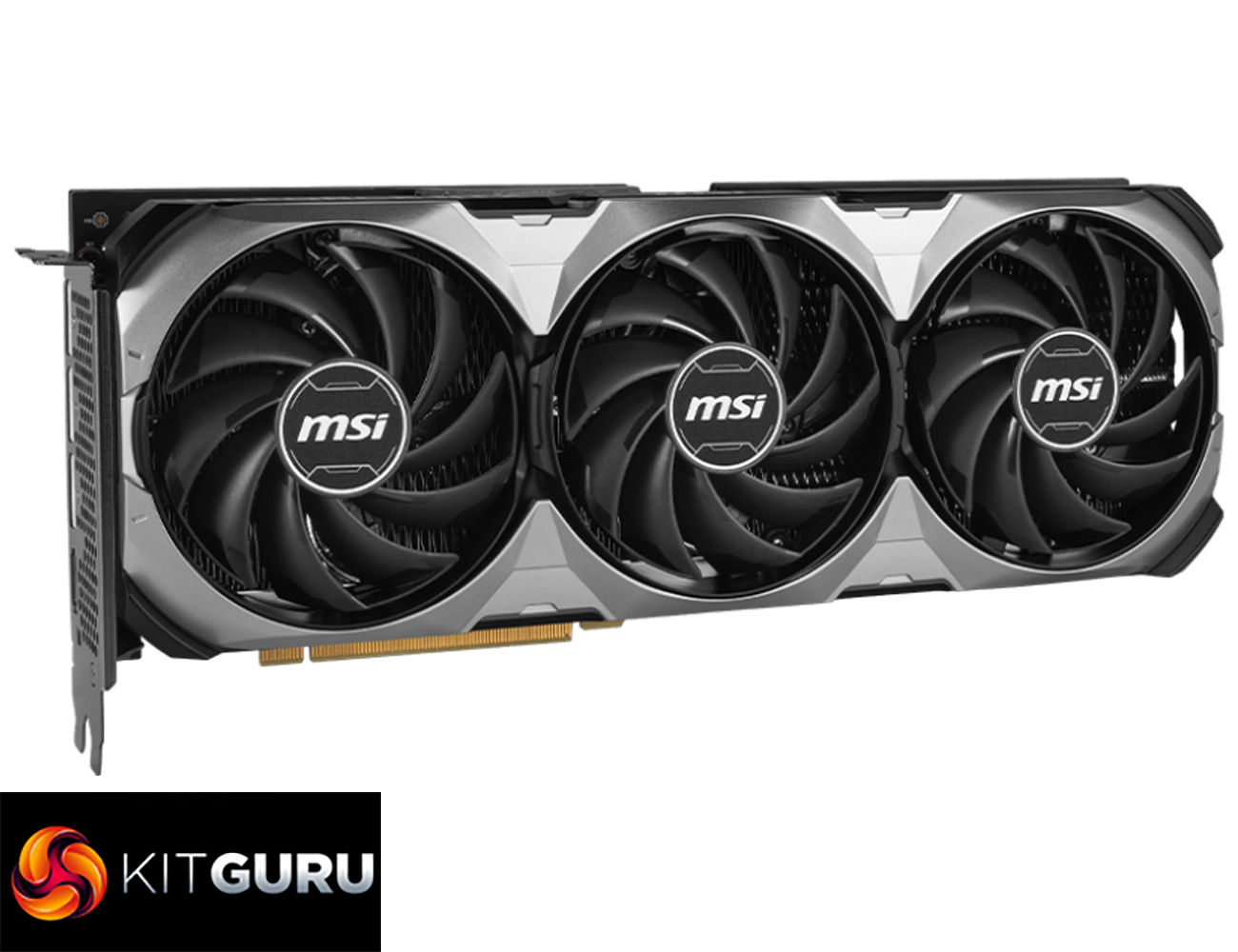Update 25th January 19:00 GMT: We have just re-visited the RTX 4070 Ti Super using the latest BIOS, which MSI has made publicly available HERE. We published a separate article investigating the latest BIOS compared to the original one, and you can find all the details HERE. In short, even the latest BIOS does not affect the results in any meaningful way, and we saw just a 1% difference on average compared to our original figures in this review, so our original conclusion (as below) still stands.
Original Conclusion
Just a week on from the launch of the RTX 4070 Super, we are already back with our review of the RTX 4070 Ti Super. Yes, it does have one of the most ridiculous product names I can remember, but it's another strong release from Nvidia that addresses the key criticism levelled at the RTX 4070 Ti – its 12GB frame buffer.
Before we talk about performance, we do need to provide some context to the data shown in this review. As mentioned on page four of this review, Nvidia got in touch with us on Sunday night, letting us know there was an issue with the MSI Ventus 3X graphics card that Nvidia provided us for this review, and performance is 5% lower than what Nvidia expected from other 4070 Ti Supers. Nvidia also provided a new BIOS for the Ventus 3X which was said to reduce this gap to 3%, but in my testing it made next to no difference to overall performance. A second updated BIOS was also provided to us just two hours before publication of this review, though needless to say we were unable to test that before going live.
It's a strange situation to be in, as Nvidia would not confirm what the issue was, while MSI was only using very vague language about what changes were actually made. All data shown in this review was tested using the Ventus 3X's original BIOS and that's what we have based our conclusions on. If we get more updates we will be sure to update this review (see update at top of page), but we can only judge a graphics card based on the numbers we see.
It's not like the card was performing poorly, either. At 1440p it slotted in pretty neatly between the original RTX 4070 Ti and AMD's RX 7900 XT, coming in 7% faster than the former but 7% slower than the latter. Thanks to the 256-bit memory interface, which increases total memory bandwidth by a third, the 4070 Ti Super also scales better at 4K than the 4070 Ti, this time coming in 8% faster on average, but we saw a couple of examples where that margin increased to 12-15%. Yes, the gains overall versus the RTX 4070 Ti aren't overly impressive – certainly not to the same extent as what we saw with the 4070 Super versus the original 4070 – but they are there, and the biggest selling point was always going to be the move to 16GB VRAM and the wider memory interface.
Ray tracing performance also scales similarly versus the RTX 4070 Ti, but of course this is where we saw the biggest wins for the 4070 Ti Super when compared against the RX 7900 XT. It proved 24% faster on average than the AMD GPU at 1440p and 4K, with certain titles like Alan Wake 2 and Cyberpunk 2077 resulting in even bigger victories for Team Green.
It was also when enabling ray tracing that we saw a couple of clear examples where having more than 12GB VRAM can be a benefit today. In both instances they were at 4K with RT enabled, in Alan Wake 2 and Ratchet and Clank – the RTX 4070 Ti crumbled and became completely unplayable, where the 4070 Ti Super stayed significantly smoother. Admittedly most games aren't yet pushing beyond 12GB VRAM usage, but clearly the 16GB framebuffer offers greater longevity and peace of mind if you plan on keeping your graphics card for several years.
Power draw and efficiency remains a strong point, too. Across the board we saw only marginal increases in power over the vanilla RTX 4070 Ti, resulting in overall efficiency that's right up there with the rest of the RTX 40-series GPUs. As such, the 4070 Ti Super does have the edge over its AMD rivals, offering 16% better performance per Watt than the RX 7900 XT.
Ultimately, the RTX 4070 Ti Super is about as good as I was expecting considering the 10% bump in core count and the switch to 16 gigs of memory over a 256-bit interface. I will certainly be interested to see how other models compare, as if the Ventus 3X really is 5% slower than what the 4070 Ti Super should be, then that's only a further positive for the new GPU as a whole.
Of course, I can only base my conclusions on what we have tested, but even then this is a strong refresh and a GPU that's well worth buying. I do believe the RX 7900 XT remains a credible option if rasterised gaming is your top priority, as it is still slightly faster overall, while some strategically timed cut-price deals only increase the value proposition. That said, I think if you are spending £750+ on a new graphics card, chances are you will be tempted by the superior ray tracing performance, DLSS support and increased efficiency of the RTX 4070 Ti Super.
The Nvidia RTX 4070 Ti Super will be available from tomorrow, January 23rd, with an MSRP of £769/$799.
Discuss on our Facebook page HERE.
Pros
- Increased VRAM capacity is much needed at this price point.
- Wider memory interface means gaming performance scales better at 4K.
- Win-win situation as it replaces the RTX 4070 Ti at the same price, while offering more cores and VRAM.
- Significantly better ray tracing performance than AMD's RX 7900 XT.
- A touch more efficient than the RTX 4070 Ti, and it's even further ahead of the RDNA 3 GPUs.
- DLSS support is a strong value-add.
Cons
- Not a massive performance jump compared to the RTX 4070 Ti (though Nvidia does claim the Ventus 3X we tested is 5% slower than expected).
- RX 7900 XT still offers better cost per frame for rasterised gaming.
KitGuru says: If you're shopping for a new graphics card in the £750-800 segment, the RTX 4070 Ti Super is well worth buying.
 KitGuru KitGuru.net – Tech News | Hardware News | Hardware Reviews | IOS | Mobile | Gaming | Graphics Cards
KitGuru KitGuru.net – Tech News | Hardware News | Hardware Reviews | IOS | Mobile | Gaming | Graphics Cards




